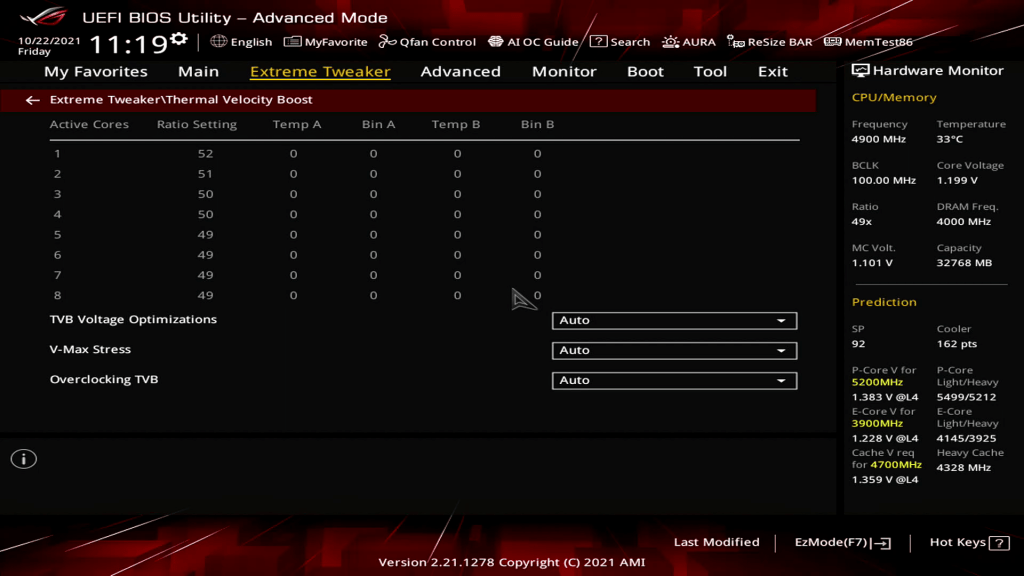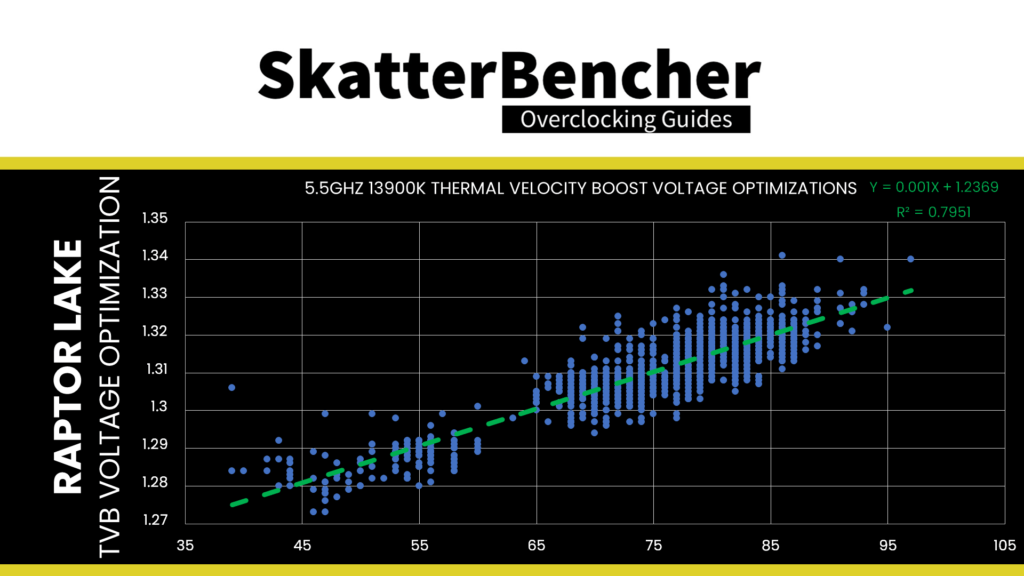Intel Thermal Velocity Boost opportunistically increases the frequency and reduces the voltage when the CPU is below its maximum temperature.

The feature came to market in 2018 with the launch of the Core i9-8950HK Coffee Lake mobile flagship processor, and it’s since been an indispensable feature on Intel Core processors. TVB does two things.
- First, it decreases the operating voltage if the CPU temperature is below the TjMax.
- Two, it opportunistically increases the clock frequency above the Turbo Boost 2.0 and 3.0 frequencies if the CPU operates below a part-specific temperature threshold. This threshold is usually 70 degrees Celsius on desktop CPUs.
With the introduction of the Intel Cryo Cooling Technology in 2020, Intel opened up the TVB configuration to motherboard vendors. The feature is named OverClocking Thermal Velocity Boost, or OCTVB for short.
Voltage Optimizations
Thermal velocity boost is an Intel technology that exploits the fact that CPUs need less voltage to run a specific frequency when the operating temperature is lower. When this setting is enabled, the CPU automatically adjusts the voltage according to the operating temperature. If you want manual control over the operating voltage to ensure stability, it’s prudent to disable this function.
When the voltage optimizations are enabled, we can use HWiNFO to track the CPU VID request as the CPU is heats up. I’ve collected data for both the Core i9-13900K and Core i5-13600K processors
Core i9-13900K Voltage Optimizations
The data collected shows an apparent increase in minimum, maximum, and average VID at a given temperature. The difference is about 50mV for 60 degrees Celsius.

When running a regression, the voltage decreases at about 1 mV per degree Celsius.

Core i5-13600K Voltage Optimizations
The data collected shows an apparent increase in minimum, maximum, and average VID at a given temperature. The difference is about 50mV for 60 degrees Celsius.

When running a regression, the voltage decreases at about 1.2mV per degree Celsius.

Frequency Boost
Thermal Velocity Boost is present on select Intel Core i9 processors and allows for an additional frequency boost on top of the Turbo Boost Max 3.0 boost when the CPU is operating below the thermal velocity boost thermal threshold. The thermal threshold is a part-specific configuration and is typically 70C for desktop processors.
Intel Thermal Velocity Boost in SkatterBencher Guides
We use Intel Thermal Velocity Boost in the following SkatterBencher guides: